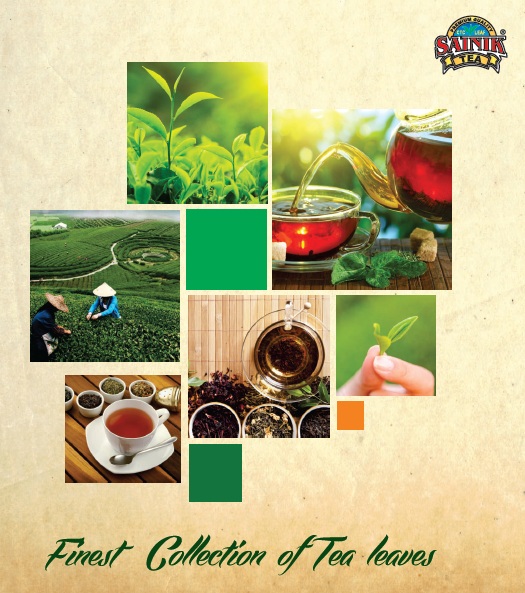ABOUT TEA
ABOUT TEA
Tea is an aromatic beverage commonly prepared by pouring hot or boiling water over cured leaves of the tea plant. From the Asia to Europe tea is enjoyed both hot and cold. An ancient beverage, tea has been drunk for pleasure and health for thousands of years. Even before it is brewed, a tea leaf is steeped in legend, history, geography, and politics.
Tea Manufacturing Process
Tea manufacture is the process of converting young fresh tea shoots into dry black tea. This involves a number of processes from plucking to packing. At the plucking stage, only the top leaf tips are picked every 6 to 7 days. The tip leaves are younger and finer which produce a better quality tea. The fresh green leaves now need to have the moisture removed from them. This is done by blowing air through the leaves for up to 14 hours, leaving a soft and pliable leaf. There are then two ways of treating the tea. Tea which is to be used as loose leaf, will normally be rolled gently to create a twisted appearance.
In contrast, tea which is to be used for tea bags, is shredded and crushed to produce a small granular product. Rolling and crushing the leaves, results in the rupturing of the leaf cells which allows oxidation to occur. This gives the tea its distinctive black colour and flavour. The tea is then dried at high temperatures to achieve the correct taste. When it has been dried, the leaf tea is of differing sizes and will also contain pieces of fibre and stalk. At this point it is processed to remove pieces of stalk which will then leave tea suitable to be sold as loose tea. The tea is passed through varying sizes of meshes to sort it and has to be passed through very fine ones in order to produce tea fine enough for tea bag production. This process of sorting is a harsh one and it can cause the tea to lose some of its flavour. That is why loose tea usually has a better flavour than the tea in a tea bag.
Tea Types
White Tea
Green Tea
Oolong Tea
Black Tea
PU-Erh Tea
Herbal Infusions
Origin & History
Tea plants are native to East and South Asia, and probably originated around the meeting points of the lands of northeast India, north Burma and southwest China.
It is said that tea was discovered accidentally by emperor Shen Nung back in 2700BC. After a large meal one day, he was relaxing in the garden with a cup of boiling water. On this occasion, some leaves from a nearby tree fell into the cup unnoticed and he consumed the drink. He enjoyed the taste of the tea and the pain relief of the drink so much, that the cup of tea was born.
The first tea used in England came from China, and it wasn’t until the 19th century that tea growing spread to other countries and indigenous tea was discovered in Assam.
History Of Tea In India
The cultivation and brewing of tea in India has a long history of applications in traditional systems of medicine and for consumption. However, commercial production of tea in India did not begin until the arrival of the British East India Company, at which point large tracts of land were converted for mass tea production.
Today, India is one of the largest tea producers in the world, though over 70% of the tea is consumed within India itself. A number of renowned teas, such as Assam and Darjeeling, also grow exclusively in India. The Indian tea industry has grown to own many global tea brands, and has evolved to one of the most technologically equipped tea industries in the world. Tea production, certification, exportation, and all other facets of the tea trade in India is controlled by the Tea Board of India.


